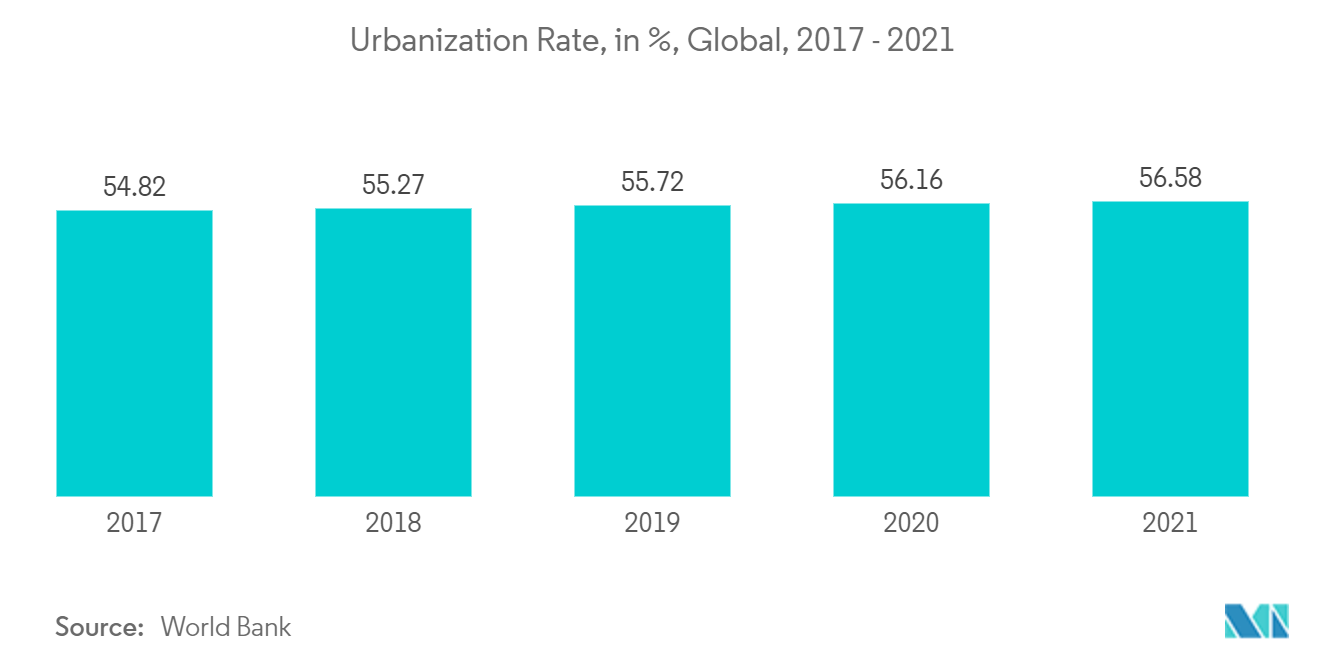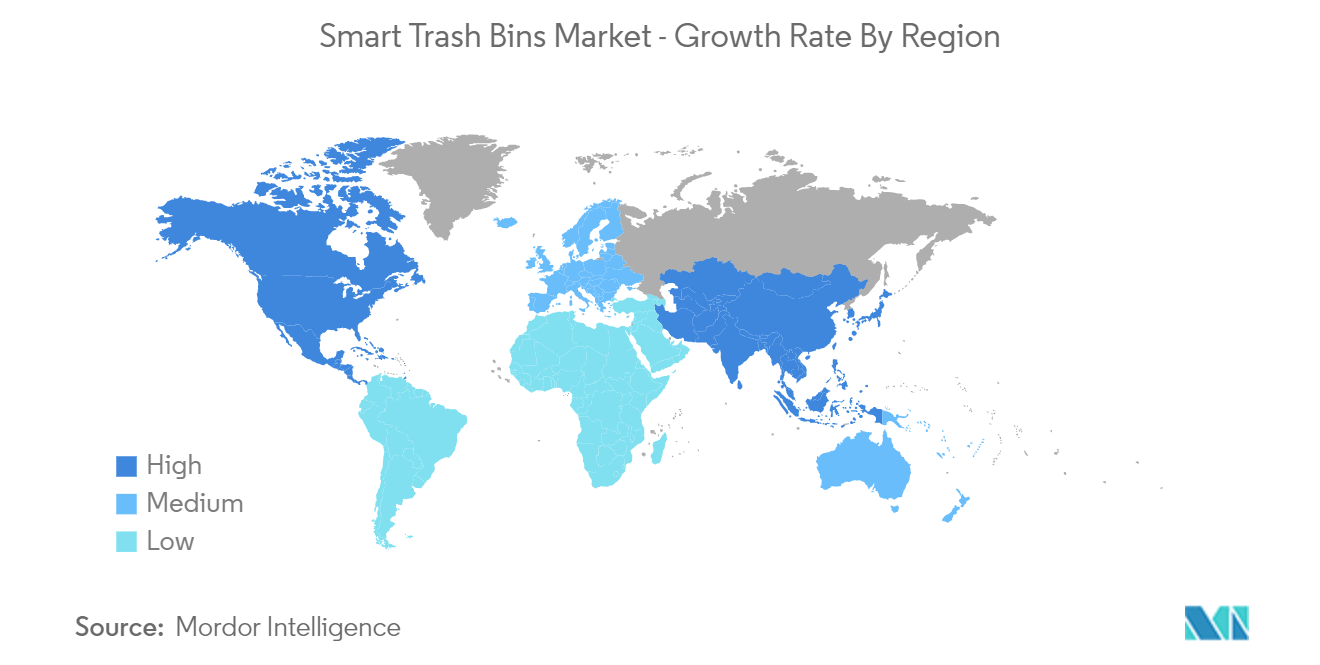Market Trends of Smart Trash Bins Industry
This section covers the major market trends shaping the Smart Trash Bins Market according to our research experts:
Growing Urbanization & Investment in Smart City Infrastructure to Drive the Market's Growth
- Over the years, urbanization has increased significantly across the globe. For instance, according to the World Bank, in 2021, about 5% of the global population stayed in urban areas. Urbanization directly correlates with waste generation, owing to the higher consumption rate of packaged or processed products.
- Urbanization is having a higher impact in developing regions than in developed regions. In developing regions, a significant portion of the waste is openly dumped, owing to a lack of awareness and required infrastructure. For instance, the World Bank predicts that by2050, total waste generation in the fastest-growing countries, such as Sub-Saharan Africa, South Asia, the Middle East, and North Africa, will have more than doubled. Considering the vast implications that openly dumped waste can have for the environment, the demand for innovative waste management solutions such as smart trash bins is expected to grow across these regions.
- Recent years have witnessed significant growth in smart city infrastructure investment. Governments, especially across emerging and developing countries, are making significant investments in developing smart city infrastructure. For instance, under Under Union Budget 2021-22, the Smart Cities Mission in India has been allocated INR 6,450 crore (USD 868 million) as compared to INR 3,400 crore (USD 457 million) in FY21.
- As smart cities primarily focus on adopting advanced digital technologies, increasing investments are expected to create a supportive market scenario for the growth of the smart trash bins market during the forecast period.

North America to Hold Significant Market Share
- The North American region is expected to hold a significant market share of the global smart trash bins market as the region has a higher percentage of the population staying in urban areas. Additionally, increased consumer and organizational awareness as well as greater use of new technologies are the main drivers of the market's expansion. Furthermore, the presence of many technology companies offering services to smart trash bin providers is also contributing to the market's growth in the region.
- The concept of smart cities and efficient waste management solutions in the North American region is increasing. While touchless trash cans provide comfort while preventing germ cross-contamination, Wi-Fi-enabled devices and the Internet of Things (IoT) are becoming more popular. Hence, the increasing investment in smart cities is expected to drive the region's demand for smart trash bins.
- For instance, in August 2022, San Fransisco state officials announced their plans to replace about 3000 old trash cans with smart trash cans. The new smart trash cans include features such as a QR codes so that people can answer questions related to individual cans. Furthermore, the city has also created interactive maps for residents to track and test the different trash can designs.
- Similarly, other major cities are also making efforts to make the waste collection, treatment, and disposal process smooth and highly efficient. For instance, Ste-Anne-de Bellevue, a small Canadian city in March 2022, announced its plans to adopt a smart garbage collection system. Such trends are expected to support the growth of the studied market during the forecast period.


